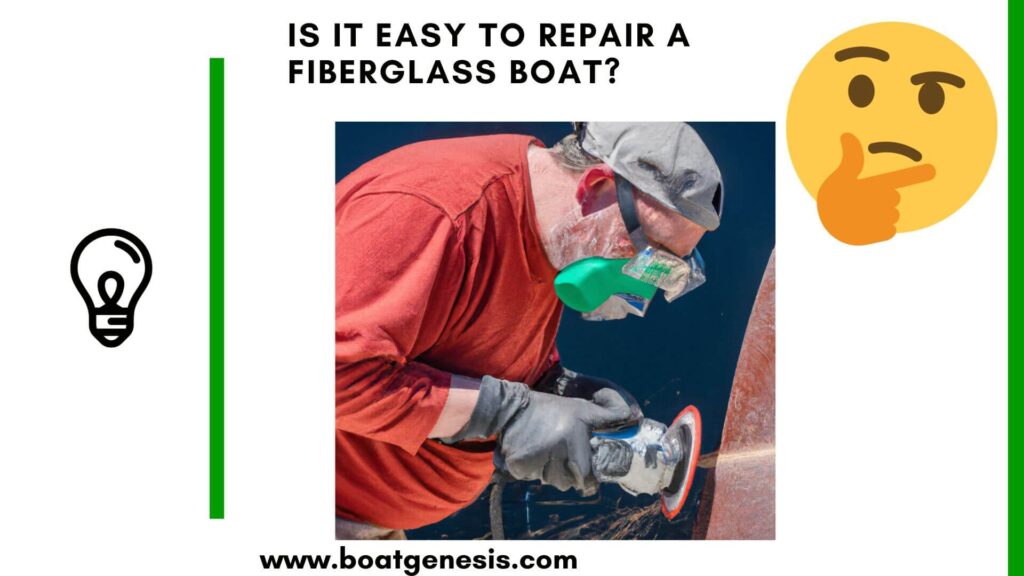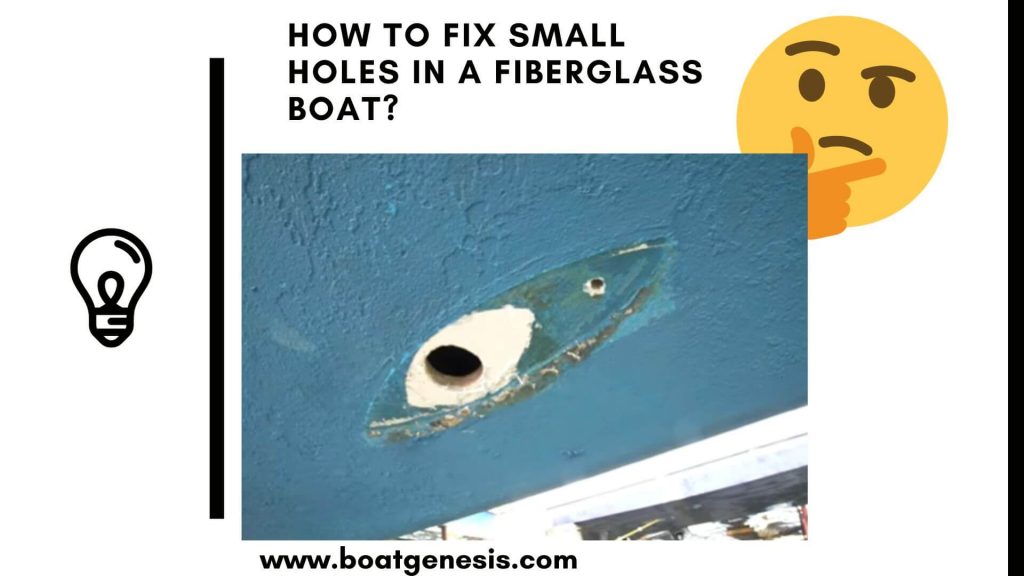Repairing damage to a fiberglass boat is no simple task. While fiberglass itself is a relatively easy material to work with, successfully restoring a fiberglass hull or deck requires specialized skills, tools, materials and plenty of patience.
For the committed DIY boat owner, minor fiberglass repairs are manageable with proper planning and preparation.
Major damage, however, typically requires professional repair services to ensure proper structural integrity and quality results.
When You Find Out a Fiberglass Boat Damage
Small cracks, chips or gouges in the gelcoat surface can often be repaired by an ambitious amateur.
However, anything beyond superficial surface damage, especially large holes, large cracks or other breaches of the fiberglass itself, is best left to the pros.
The complexity and risks associated with structural fiberglass repairs are simply too great for inexperienced hands. Improperly repaired fractures that penetrate the boat’s hull can cause catastrophic failure under stress.
Working with Fiberglass Resins and Fabrics
The materials used in fiberglass repair—polyester or epoxy resins and fiberglass fabrics—do not behave like common workshop substances.
The chemical reactions occurring as resin cures to hardened plastic require careful handling and ideal environmental conditions.
Understanding appropriate ratios of hardener additives, dry times, strength and flexibility factors is mandatory before attempting structural fiberglass repairs.
Achieving Proper Adhesion
Applying layers of patching fabric and resin compounds relies on excellent bond adhesion to existing boat surfaces.
Successfully interlocking new fiberglass with old involves extensive surface preparation, exact mixture ratios and application techniques.
Air bubbles, contamination or improper clamping during curing can all ruin adhesion properties.
Weak areas in repaired fiberglass invite structural failure when stressing the boat during normal use.
Maintaining Structural Strength
Fiberglass boat repairs aim to fully restore original design strength and integrity. This means using multiple layers of glass fabric set in resin to match existing material densities.
Simply covering a hole with a thin patch fails to provide adequate strength. The coating must equal or exceed the capabilities found throughout the surrounding hull or deck.
Restoring such robust characteristics demands skill and understanding best furnished through professional training and experience.
==>> Read also how fiberglass and gel coat work together in repair, maintenance, and construction.
Aesthetic Considerations
For many boat owners, an ugly repair mars the pride and joy of boat ownership as much as underlying weaknesses.
Professionals utilize methods for achieving gelcoat color matching and glossy surfaces.
They expertly fill any surface irregularities for smooth transitions across repair boundaries.
Polishing and other refinements help produce repairs that are invisible to the eye while delivering full structural renewal.
Final Thoughts
In summary, successfully repairing fiberglass boats—especially when damage penetrates beyond the surface—presents multifaceted challenges.
Successfully working with resin chemistry, achieving reliable adhesion, restoring design strength levels and delivering top-notch aesthetics is complex.
While minor gelcoat chips or small cracks can be managed by ambitious and prepared amateurs, the risks quickly outweigh the rewards as damage severity increases.
In all but the most superficial repairs, enlisting professional fiberglass repair services is the wisest choice for boat owners.
Paying the costs of proper repairs is worthwhile to ensure safety on the water and maintain the high value of prized fiberglass boats.
You should also consider reading my full guide on how to repair a fiberglass boat here.


